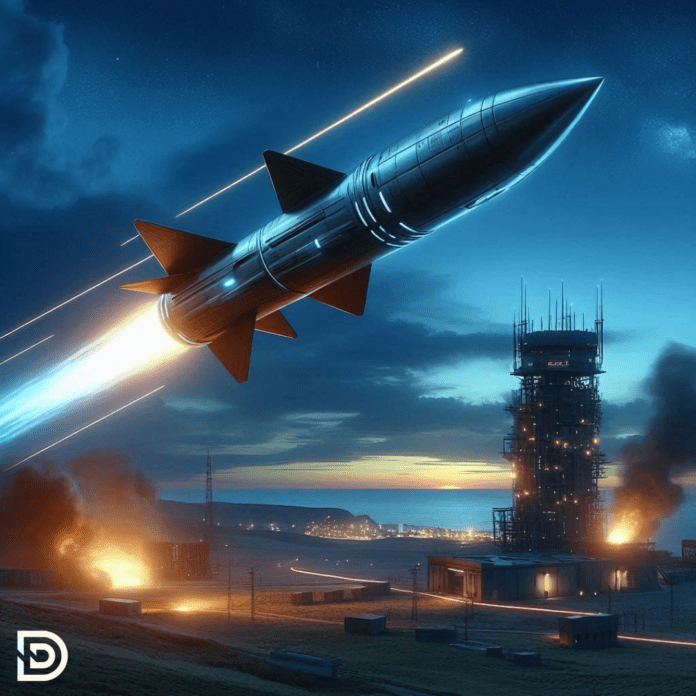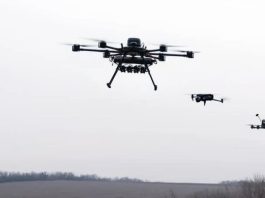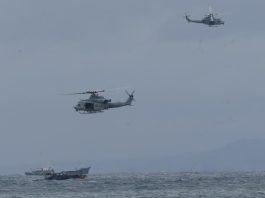On a significant day of military action, the armed forces of Yemen, known as the Houthis, launched a major missile strike targeting two high-profile locations in Israel. Two ballistic missiles were used in the attack: a Fajr-type missile and a hypersonic missile known as Falasteen-2 (Palestine-2).
Houthis Launch Powerful Strike with Hypersonic and Ballistic Missiles
The Falasteen-2 hypersonic missile was aimed at the Sdot Micha base located in eastern Ashdod, a city in the southern part of Israel. This base is well-known for housing rocket systems, including Jericho missiles and Arrow (Hetz) missile batteries. These systems are considered part of Israel’s strategic defense infrastructure.
One noteworthy aspect of this strike is the use of a hypersonic missile. Because they may fly at speeds greater than five times the speed of sound, hypersonic missiles are very challenging to detect and intercept. This marked a significant development in the conflict, as it was one of the first reported uses of a missile of this kind by the Houthis.
Deadly US F-35 Deployment Escalates Conflict with Houthis in the Middle East
Ben Gurion Airport and Sdot Micha Base Are Targeted
The Sdot Micha base is not just any military site. It is believed to be a central location for Israel’s strategic missile operations. Reports say that the base has launch platforms for long-range Jericho missiles, which may be capable of carrying nuclear warheads, and also Arrow missile defense systems designed to intercept incoming missiles.
This makes Sdot Micha one of the most sensitive military installations in Israel. Hitting this base with a hypersonic missile shows that the Houthis are attempting to challenge Israeli military strength directly.
In addition to the attack on Sdot Micha, a second missile—of the Fajr type—was launched toward Ben Gurion International Airport. This airport is Israel’s main international airport and a major civilian hub near the city of Tel Aviv, located in the Yaffa area. The targeting of such a location raises serious concerns about the risk to civilian lives and international travel.
While no details were immediately available about the extent of the damage, this action signals an escalation in the types of targets chosen during the conflict.
Red Sea Turmoil Intensifies as Houthi Rebels Vow Relentless Retaliation
Drone Attack Hits Strategic Site in Ashkelon
On the same day, the Houthis also used an unmanned aerial vehicle, commonly called a drone, to carry out another strike. This time, the target was a “vital” location in Ashkelon, another city in the southern part of Israel. The term “vital” generally refers to infrastructure or military-related buildings that play a key role in daily operations or defense efforts.
According to statements from the Yemeni Armed Forces, their drone units carried out this operation successfully. The statement was accompanied by footage that featured music but no further commentary, and it reportedly confirmed that the attack on Ashkelon was part of a broader military campaign.
Ashkelon has previously been a target for missile strikes due to its power stations and military facilities. However, this specific drone strike aimed at a high-value target adds another layer to the ongoing military tension in the region.
The triple-strike operation—featuring a hypersonic missile at Sdot Micha, a ballistic missile at Ben Gurion Airport, and a drone strike in Ashkelon—demonstrates a clear message of capability and intent from the Houthi military. While official responses from Israeli defense sources were still pending at the time of this report, the scale and precision of the attacks mark a notable shift in the nature of confrontations occurring across the region.
Message to Iran: U.S. B-52s Operate with Israeli F-35Is Amid Rising Tensions in Middle East
This series of coordinated attacks represents a significant moment in the evolving conflict landscape. The use of advanced missile technology like hypersonic projectiles and targeted drone strikes shows how modern warfare tactics are rapidly changing. For now, the facts on the ground remain focused on the aftermath of this powerful and sudden escalation.







